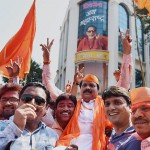 International Film Festival of India better known as IFFI, is among the oldest film festivals in the Asian continent. Beginning 1952, the festival has acted as a platform for popularisation of Indian cinema to a global audience while acting as an introduction of sorts for foreign films to Indian cinephiles spread over selected cities. In 1978 for the first time regional cinema entered the festival. Since inception, only 16 Odia films have been selected in Indian panorama section. This year, at the 45th edition of the festival being held from November 20 to 30, 2013 at Goa, Odia film Adimbichar will be the Odia entry.This film is sequel of SALABUDHA which was selected for Indian panorama in 2013, After Manmohan Mahapatra Sabysachi directed movie has selected for Indian Panorama for the two consecutive year Here are some of the Odia entries that have, over the years, found a pride of place in the Indian panorama till date.
International Film Festival of India better known as IFFI, is among the oldest film festivals in the Asian continent. Beginning 1952, the festival has acted as a platform for popularisation of Indian cinema to a global audience while acting as an introduction of sorts for foreign films to Indian cinephiles spread over selected cities. In 1978 for the first time regional cinema entered the festival. Since inception, only 16 Odia films have been selected in Indian panorama section. This year, at the 45th edition of the festival being held from November 20 to 30, 2013 at Goa, Odia film Adimbichar will be the Odia entry.This film is sequel of SALABUDHA which was selected for Indian panorama in 2013, After Manmohan Mahapatra Sabysachi directed movie has selected for Indian Panorama for the two consecutive year Here are some of the Odia entries that have, over the years, found a pride of place in the Indian panorama till date.
Seeta Rati was the first Odia film to be selected for Indian panorama in 1983 directed by Manmohan Mahapatra. This debut venture of Mahapatra was the first new wave Odia movie. After that in 1985, 1986 and 1988 Manmohan Mahapatra’s three movies Nirab Jhada, Klanta Aparanha and Majhi Pahacha were selected for screening at the Indian panorama. In 1984 Maya Miriga directed by Nirad Mahapatra and Dhare Allua directed by Sagir Ahamed were also selected.
While Nirad Mahapatra’s Maya Miriga (The Mirage) revolved around the clash between the past, present and future, parents and children, men and women, the traditional and the modern, Dhare Alua (A Ray of Light) was based on a story by Manorama Das.
In 1995 and 1996 Aranya Rodan and Nirbachan, both directed by Late Biplab Ray Choudhary were selected for Indian Panorama. Aranya Rodana concentrated on the story of a hardworking lady journalist surviving in a tribal dominated place based on the novel Ashanta Aranya by Odia writer Satakadi Hota and Nirbachana presented a stunningly controlled and uniquely cinematic metaphor of rural India.
In 1992, 1997 and 1998 Adi Mimansha, Lavanya Preeti and Sesha Drusti directed by Mumbai based cameraman-cum-director Apoorva Kishore Bir were selected for the festival. While NFDC produced Adi Mimansha threw light on the issues of poverty and survival of a middle class family, Sesha Drusti effectively portrayed two generations trapped in a web -one that can’t break away from its past, the other that tries to deal with a present with no future. LavanyaPreeti deals with subtle and delicate exposition of the growing up process from childhood to adolescence through the use of myths and striking visuals.
In 1999 Bijoy Ketan Mishra’s Ahalya was selected for Indian panorama. Mishra’s maiden directional effort Ahalya (The Words of Silence) depicted the mute suffering of a hapless woman, widowed in her childhood.
In 2000 Biswaprakash directed by Susant Mishra was selected. Biswaprakash, a young man in his early 20s was a rebel revolting constantly against the obscure traditional lifestyle of his family rooted deeply in the medieval socio-religious mores.
In the world of Odia parallel cinema, another successful filmmaker is Prafulla Mohanty, who has given a cinematic shape and texture to Godabarish Mohapatra’s widely read story Maguni Ra Sagada. With the flow of time and progress in civilization, how Sagada (bullock cart), the most important transport of yesteryears in the villages becomes a useless product. This was echoed in the film which was selected for Indian panorama for the year 2002.
In 2010 Swayamsiddha directed by Sudhanshu Sahu also got an entry into the Indian Panorama. The film focused on the implications of the young mass adopting to Maoist insurgency and their sustained alienation from the mainstream.
In 2013 Salabudha, made in Kosali language and set on a rural background had showcased at the panorama. Focusing on the plight of the aged people in villages in the western part of the state, the film directed by Sabyasachi Mohapatra, is based on a novel written by Kapil Prasad Mohapatra (the director’s father).

